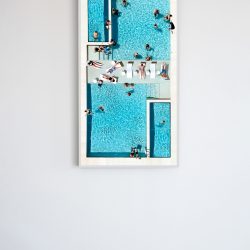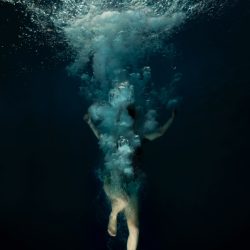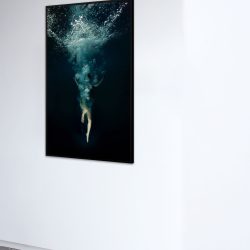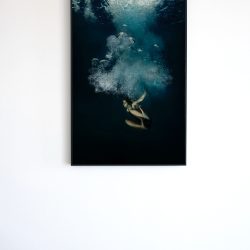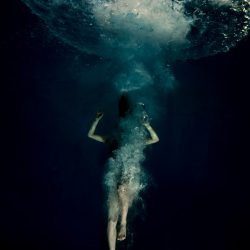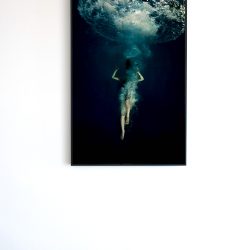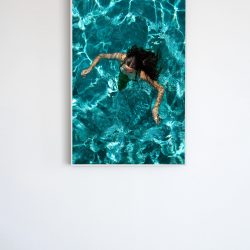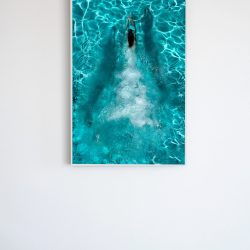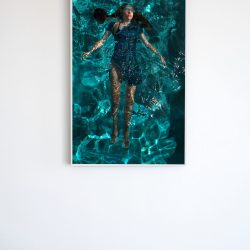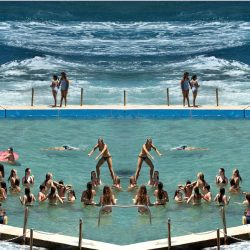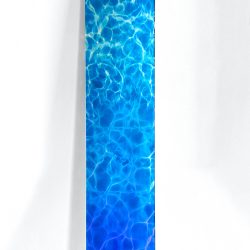Cathy Carter | The Liminal Blue
Liminal Blue
“I’m fascinated by how we perceive liquid spaces in the world – how we interact with water, with the vast open ocean and in contrast, the confined constructed swimming pool. Both share similarities in the way we experience these spaces but there are also huge differences in the intensity of our interaction with these spaces, our sense of freedom, joy, elation, exposure, fear, and possibility. There is an otherworldly experience that no other environment offers to me, a visceral intensity of sensation where my imagination connects with my expanded and primordial self.”
The deep ocean, vast and unrestrained, is a place of beauty but also environmental degradation and a space of restorative and sustainable practices as well as depletion and destruction. The ocean triggers experiences of awe and the sublime, of the infinite and the unknown, the deep stirring of the imagination. In contrast, the swimming pool – contained, constructed, known – is a space of leisure, pleasure, relaxation and exercise, in relative safety. It’s a space to dream.
Each of these spaces provides an encounter with the liminal blue. They are spaces of transition from water to air; breathing and holding breath; illumination and refraction of light from the sun and moon and total inky darkness; floating and sinking; distorted sounds and shapes. Common to both these liminal spaces is an experience of ‘flow’ where we inhabit a state of ‘bare attention’, of presence, that brings with it a sense of freedom, of recovery, of the self.
These works offer sensuous and psychologically compelling encounters with water and explore human vulnerability in these environments.
Liminal Blue also looks at variations in the colour blue, from the earliest uses of ground lapis lazuli in Mesopotamia, through to Yves Klein’s patented IKB (a colour Klein considered to represent pure space itself). Part of this series (‘Plunge, Klein Blue’) utilises this patented colour to represent the void. The colour blue’s complex and shifting cultural associations correspond to its illusory qualities in nature where it is rarely a pigment but most often a reflection, or our perception of light. Water absorbs the longer wavelengths of other colours, while the shorter wavelength of blue dissipates to give the sea its blue appearance. Perhaps this everyday illusion accounts for the enduring metaphorical, emotional and symbolic power of blue within the colour spectrum.

